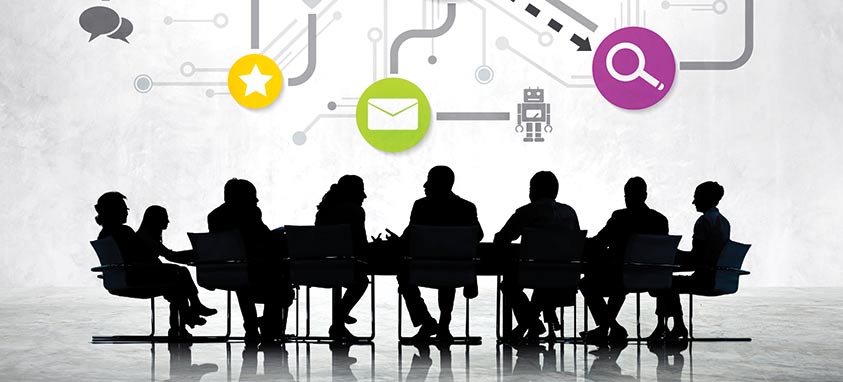Four tips to make sure information is protected during meetings
We live in a technologically intensive age in which information is a highly valued asset that continues to increase year after year. This is what led industry experts to project that by 2020 our universe of digital information will grow to 40,000 exabytes, which equals 40 trillion gigabytes. That is a lot of zeros.
Information has evolved into a digital asset and is now part of every organization’s value. Consider how much organizations spend annually on the generation, collection, storage, processing and dissemination of information.
The risk value of information rests in two variables: First, how much is someone willing to pay to get the information? Second, to what length is someone willing to go to (legally or illegally) to obtain the information?
Stop for a moment to think about all the information (some sensitive) that is present and shared at executive meetings, sales meetings, product development meetings, marketing meetings and meetings with your business partners.
Last year, Gartner, a U.S. information technology research and advisory firm, projected that a third of Fortune 100 companies will face an information crisis by 2017. That is just one measure; the problem is much larger. Competitors, criminals and rogue nation states have set their sights on obtaining information that holds a significant value from organizations large and small. That is why information theft has exploded in recent years, and like it or not, you are on the frontline.
The FBI warned about the growing threats information and digital assets are under in a public PowerPoint presentation titled “Industrial Espionage: Protecting America’s Secrets.” Meetings, conferences, trade shows and even professional organizations are identified as potential collection places ripe for stealing information assets.
1. Staff Sign-in & Material Tables
Many meetings and events have a table outside the meeting room where the agenda, handouts and support materials are picked up by attendees. Sometimes these tables are staffed to keep track of participants and coordinate breaks and other activities. These tables, however, are often left unattended during breaks and lunches, at which point anyone can help themselves to the materials.
At an event I spoke at, I approached the unattended table and wanted to look at the agenda. After my luncheon speech, the topic was mergers and acquisitions. Under that heading, it listed the three companies that were to be discussed. That is valuable information you don’t want to get out. Either put the table with those documents in the meeting room or make sure it is continuously staffed.
2. Know Your Meeting Room Neighbors
While waiting to speak at an event, I sat in the conference room next to where the company executives were holding their offsite meeting. I could hear every word that was spoken. That really opened my eyes and made me more sensitive to the issue. When you are planning an offsite meeting, have you ever tested the sound transfer for your room to those adjacent? Have you ever asked if the rooms are booked for the same day and time that your event is taking place, and if so by whom? Perhaps you should.
3. Double-Check Hotel Business Offices
Most meeting and conference facilities have wireless networks and a computer/printer/copier room that is used by their guests. At one recent event, I went to make a copy of a paper I showed during my presentation. When I approached the multifunction printer/scanner/copier, there were two documents in the output tray. One of the documents was a product development and marketing Gantt chart with the company name and product clearly identified. I put it off to the side, made my copy and left. I just could not help but return to check on that document, and sure enough it was still there, so I shredded it. It’s a good idea to make sure no documents are left behind at your meetings and events.
4. Avoid Unknown USB Thumb Drives
This is one of the oldest tricks in the modern espionage handbook. A USB thumb drive is placed on the floor outside an occupied meeting room. The drive contains malware and if plugged into a computer, the malware will infect it and collect and send out information once it is connected to the Internet. Many of the more sophisticated versions of this malware can actually spread to corporate networks, infecting other computers. Never, ever plug a found USB thumb drive into your computer.
Meeting and event planners have an obligation to make sure the meeting or event is successful. How successful would your meeting be if sensitive information was stolen there?
Kevin Coleman is a speaker and author who provides insight on strategy, innovation, creativity and the high-velocity technology era. The former chief strategist at Netscape has spoken before prestigious organizations, including the United Nations, U.S. Congress at U.S. Strategic Command and Fortune 500 companies.




